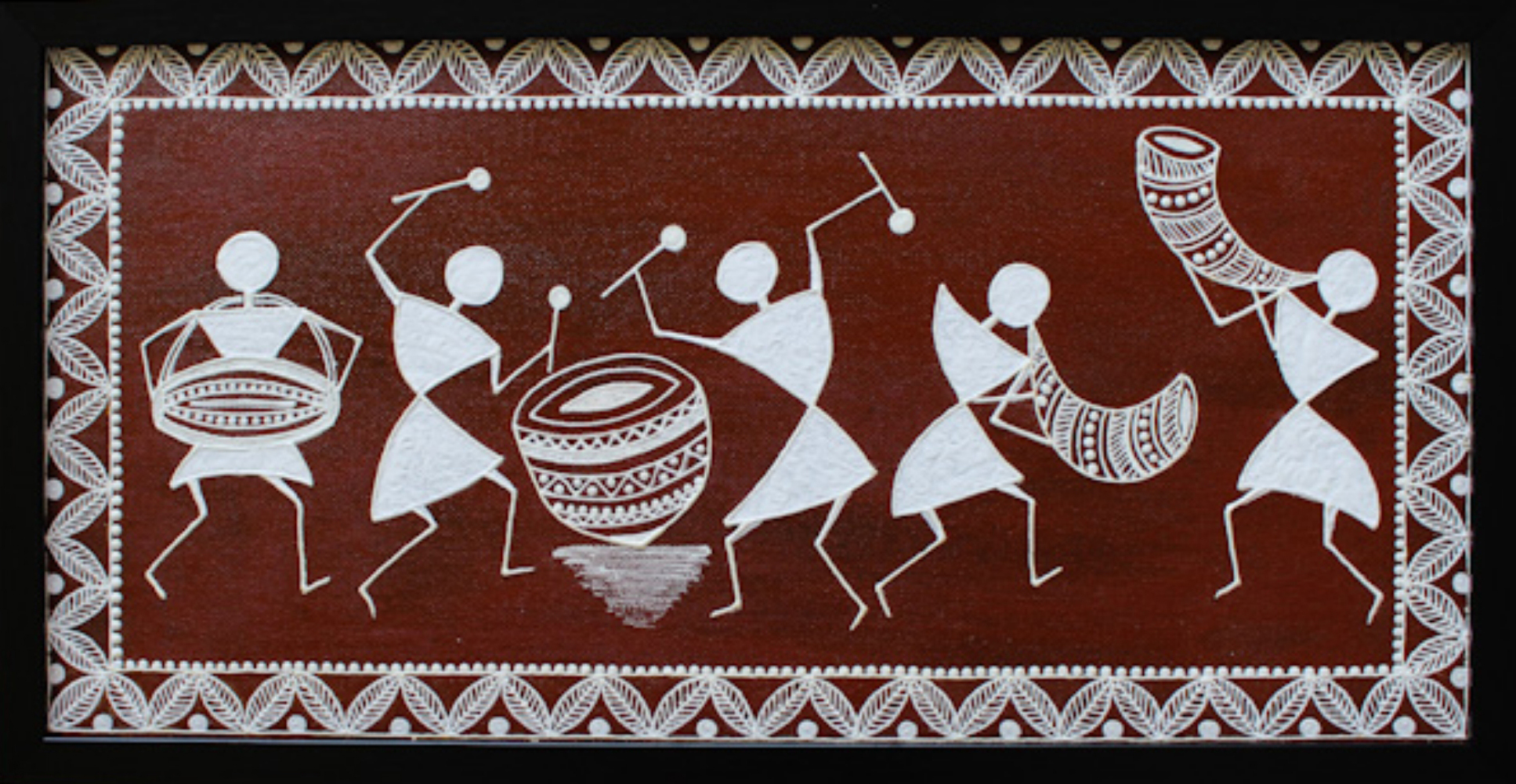
Where do we see Warli Art today?
Indian traditional art paintings are faced with growing competition, modernisation and fading interest from contemporary art connoisseurs. Tribal Art forms are no exception and have a monumental challenge to keep the art forms from vanishing. Have you gone to the market and become fascinated with sarees, dupattas or bed sheets etc. having those stick figure designs? I know I am attracted with one that is simple yet elegant with a beautiful ethnic touch which sparks up a vibrancy!
This is Warli Art, one such tribal art forms from Maharashtra that had to be resuscitated and given a platform from where it now stands on its own grandeur. Every art form that sees a decline needs a saviour and for Warli art, it was Jivya Soma Mashe, who in the late 1970’s realised the need to revive their traditional art. He took upon himself to practice this art on a daily basis and not only as part of the community rituals. His efforts to conserve and popularise Warli paintings earned him the prestigious national award ‘Padma Shri’ in 2011, which gave him both national and international recognitions.
His popularity inspired many tribal youths to see the potential of their traditional art in making a livelihood. Organizations like Vanavasi Kalyan Ashram have also helped in contributing in the areas of education and healthcare for the tribes. Historically, this art form was found adorned in the mud walls of the village huts, although in modern times, Warli art is not just restricted to mud walls and has moved onto paper and canvas. In today’s contemporary times the markets are flooded with items which are embellished with this art form.
From dominating the Indian fashion with the artwork being flaunted in sarees, jewellery, kurtis, bags and dupattas to adorning the home decor items like pots, vases, wall clocks, bedsheets and coffee mugs, Warli is pretty much present everywhere! With a new light on the existing artwork, artisans are able to compete with other contemporary art forms.
The intricate patterns and the raw appeal of the motifs and designs of the Warli art has also attracted fashion designers like Anita Dongre and James Ferreira to use the paintings in their collections being displayed on the runway ramp. Also, the rustic charm of the paintings has moved from the village mud walls to adorn the hotel rooms and lobbies. Market demand for something new is dictating today’s Warli artists or designers to throw a new light to the age-old art. Commercialisation of this traditional space helps the tribal artisans to face new challenges from the market while adhering to what has always been there
